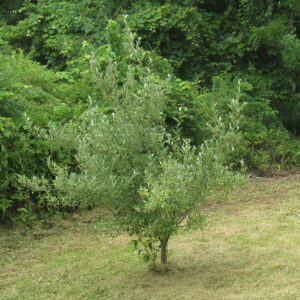Click an image to help identify what you see outside, then continue to the removal page for more photos.
Many of the trees we see growing on Long Island are highly invasive and non-native — commonly Chinese exotics brought here over 200 years ago. Today most Long Island soils harbor viable seeds dispersed from their descendants via wind, birds, or mammals years to decades ago. Under the right circumstances — often sun exposure when land is cleared — these seeds will germinate and grow to out-compete native species.
Long Island’s invasive trees and shrubs include the ubiquitous tree-of-heaven, Japanese angelica, Norway maple, and sycamore maple, plus some newcomers such as glossy buckthorn and Callery pear, as well as thorny multiflora rose and autumn olive shrubs. Tree and Shrub Removal addresses removing saplings — defined as young trees four inches or less in diameter at breast height. Larger tree removal may require a town permit and some trees may need to be debarked before cutting to prevent root suckers.
The best time of year to address small woody plants (hardwood trees and shrubs) is in the late fall and early winter. Seedlings are easier to uproot intact once the ground has cycled between freeze and thaw, insulated coats and gloves protect against thorns, plus better access to the woody plants once other plants have withered.
Soon after removing tree seedlings, cover the open ground with mulch (a thick layer of leaves) or replace them with native, shade loving plants (plugs or seeds) such as white wood aster Eurybia divericata, and then mulch. This hardy, fast growing native species is a beautiful shade loving weed suppressant. It self-seeds, blooms throughout September and is a source of nectar and pollen for native pollinators. Click Native Plants in Recent Posts.




